The report indicates that, based on Resolution No. 60-NQ/TW of the 11th Central Committee Meeting of the 13th Party Congress; Resolution No. 76/2025/UBTVQH15 of the Standing Committee of the National Assembly on the reorganization of administrative units in 2025 and the assignment of the Government; the People's Committees of 23 provinces and centrally-administered cities (where the political -administrative centers of the new provincial-level administrative units are selected) have chaired and coordinated with relevant localities to develop 23 dossiers for the reorganization of 52 provincial-level administrative units. The Ministry of Interior has appraised the aforementioned 23 dossiers and compiled them into one Government plan on the reorganization of provincial-level administrative units in 2025.
34 provincial-level administrative units
The draft plan of the Government identifies 52 provincial-level administrative units to be reorganized, including: 4 cities (Hai Phong, Ho Chi Minh City, Da Nang, and Can Tho); and 48 provinces (Ha Nam, Hung Yen, Vinh Phuc, Bac Ninh, Thai Binh, Hai Duong, Nam Dinh, Ninh Binh, Bac Kan, Thai Nguyen, Phu Tho, Bac Giang, Hoa Binh, Tuyen Quang, Lao Cai, Yen Bai, Ha Giang, Ninh Thuan, Quang Tri, Phu Yen, Quang Binh, Quang Ngai, Khanh Hoa, Dak Nong, Tay Ninh, Binh Duong, Binh Thuan, Binh Phuoc, Ba Ria - Vung Tau, Ben Tre, Bac Lieu, Vinh Long, Hau Giang, Tra Vinh, Tien Giang, Soc Trang, Dong Thap, An Giang, Long An, Ca Mau, Quang Nam, Binh Dinh, Dak Lak, Dong Nai, Gia Lai, Kon Tum, Lam Dong, and Kien Giang).
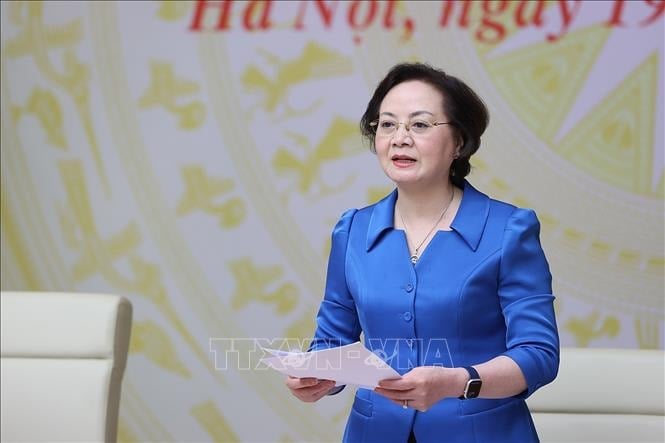 |
Minister of Home Affairs Pham Thi Thanh Tra. |
There are 11 provincial-level administrative units that did not undergo restructuring, including: 10 provincial-level administrative units that meet the prescribed criteria: Hanoi, Hue, Lai Chau, Dien Bien, Son La, Lang Son, Quang Ninh, Thanh Hoa, Nghe An, and Ha Tinh; and 1 province that does not meet the criteria but has unique characteristics: Cao Bang.
After the reorganization, Ho Chi Minh City has a population of over 14 million people.
Regarding the restructuring options, the Ministry of Interior stated that there are 23 restructuring options for 52 provincial-level administrative units to form 23 new provincial-level administrative units. Specifically:
The provinces of Ha Giang and Tuyen Quang were merged to form a new province called Tuyen Quang, with a natural area of 13,795.50 km² and a population of 1,865,270 people. The political and administrative center is located in the present-day Tuyen Quang province.
The provinces of Yen Bai and Lao Cai were merged to form a new province called Lao Cai, with a natural area of 13,256.92 km² and a population of 1,778,785 people. Its political and administrative center was located in the present-day Yen Bai province.
The provinces of Bac Kan and Thai Nguyen were merged to form a new province called Thai Nguyen, with a natural area of 8,375.21 km² and a population of 1,799,489 people. The political and administrative center was located in the present-day Thai Nguyen province.
The provinces of Vinh Phuc, Hoa Binh, and Phu Tho were merged to form a new province called Phu Tho, with a natural area of 9,361.38 km² and a population of 4,022,638 people. The political and administrative center is located in the present-day Phu Tho province.
The provinces of Bac Giang and Bac Ninh were merged to form a new province called Bac Ninh, with a natural area of 4,718.6 km² and a population of 3,619,433 people. Its political and administrative center was located in the present-day Bac Giang province.
The provinces of Thai Binh and Hung Yen were merged to form a new province called Hung Yen, with a natural area of 2,514.81 km² and a population of 3,567,943 people. The political and administrative center is located in the present-day Hung Yen province.
The province of Hai Duong and the city of Hai Phong were merged to form a new city called Hai Phong City, with a natural area of 3,194.72 km² and a population of 4,664,124 people. The political and administrative center is located in the current city of Hai Phong.
The provinces of Ha Nam, Ninh Binh, and Nam Dinh were merged to form a new province called Ninh Binh, with a natural area of 3,942.62 km² and a population of 4,412,264 people. The political and administrative center is located in the present-day Ninh Binh province.
The provinces of Quang Binh and Quang Tri were merged to form a new province called Quang Tri, with a natural area of 12,700 km² and a population of 1,870,845 people. The political and administrative center was located in the present-day Quang Binh province.
The province of Quang Nam and the city of Da Nang were merged to form a new city called Da Nang City, with a natural area of 11,859.59 km² , a population of 3,065,628 people, and its political and administrative center located in the current city of Da Nang.
The provinces of Kon Tum and Quang Ngai were merged to form a new province called Quang Ngai, with a natural area of 14,832.55 km² and a population of 2,161,755 people. The political and administrative center was located in the present-day Quang Ngai province.
The provinces of Gia Lai and Binh Dinh were merged to form a new province called Gia Lai, with a natural area of 21,576.53 km² and a population of 3,583,693 people. Its political and administrative center was located in the present-day Binh Dinh province.
The provinces of Ninh Thuan and Khanh Hoa were merged to form a new province called Khanh Hoa, with a natural area of 8,555.86 km² and a population of 2,243,554 people. The political and administrative center is located in the present-day Khanh Hoa province.
The provinces of Lam Dong, Dak Nong, and Binh Thuan were merged to form a new province called Lam Dong, with a natural area of 24,233.07 km² and a population of 3,872,999 people. The political and administrative center is located in the present-day Lam Dong province.
The provinces of Dak Lak and Phu Yen were merged to form a new province called Dak Lak, with a natural area of 18,096.40 km² and a population of 3,346,853 people. The political and administrative center is located in the present-day Dak Lak province.
The provinces of Ba Ria - Vung Tau, Binh Duong, and Ho Chi Minh City were merged to form a new city called Ho Chi Minh City, with a natural area of 6,772.59 km² and a population of 14,002,598 people. The political and administrative center is located in the present-day Ho Chi Minh City.
The provinces of Dong Nai and Binh Phuoc were merged to form a new province called Dong Nai, with a natural area of 12,737.18 km² and a population of 4,491,408 people. The political and administrative center is located in the present-day Dong Nai province.
The provinces of Tay Ninh and Long An were merged to form a new province called Tay Ninh, with a natural area of 8,536.44 km² and a population of 3,254,170 people. Its political and administrative center was located in the present-day Long An province.
The cities of Can Tho, Soc Trang, and Hau Giang were merged to form a new city called Can Tho City, with a natural area of 6,360.83 km² and a population of 4,199,824 people. The political and administrative center is located in the current Can Tho City.
The provinces of Ben Tre, Vinh Long, and Tra Vinh were merged to form a new province called Vinh Long, with a natural area of 6,296.2 km² and a population of 4,257,581 people. The political and administrative center is located in the present-day Vinh Long province.
The provinces of Tien Giang and Dong Thap were merged to form a new province called Dong Thap, with a natural area of 5,938.64 km² and a population of 4,370,046 people. Its political and administrative center was located in the present-day Tien Giang province.
The provinces of Bac Lieu and Ca Mau were merged to form a new province called Ca Mau, with a natural area of 7,942.39 km² and a population of 2,606,672 people. The political and administrative center is located in the present-day Ca Mau province.
The provinces of An Giang and Kien Giang were merged to form a new province called An Giang, with a natural area of 9,888.91 km² and a population of 4,952,238 people. Its political and administrative center was located in the present-day Kien Giang province.
96.19% of the population agrees with the policy of reorganizing provincial-level administrative units.
After the reorganization, the country has 34 provincial-level administrative units, including 6 centrally-administered cities (Hanoi, Hai Phong, Hue, Da Nang, Can Tho, and Ho Chi Minh City) and 28 provinces (including: Lai Chau, Dien Bien, Son La, Lang Son, Cao Bang, Tuyen Quang, Lao Cai, Thai Nguyen, Phu Tho, Bac Ninh, Hung Yen, Ninh Binh, Quang Ninh, Thanh Hoa, Nghe An, Ha Tinh, Quang Tri, Quang Ngai, Gia Lai, Khanh Hoa, Lam Dong, Dak Lak, Dong Nai, Tay Ninh, Vinh Long, Dong Thap, Ca Mau, and An Giang).
According to the Ministry of Interior, all 23/23 provincial-level administrative units formed after the reorganization have met the standards for provincial-level administrative units as stipulated in Article 4 of Resolution No. 76/2025/UBTVQH15.
The project dossier was prepared in accordance with the provisions of Clause 2, Article 8 of Resolution No. 76/2025/UBTVQH15. Accordingly, the project clearly stated the legal basis, necessity, current status of provincial-level administrative units to be reorganized, the reorganization plan, the basis for selecting the plan, the name and political-administrative center of the new provincial-level administrative unit after reorganization, and the impact assessment on state management, economy, society, national defense, political security, social order, administrative procedure reform, and public service provision in the reorganized administrative units.
Based on Resolution No. 60-NQ/TW, Resolution No. 76/2025/UBTVQH15, and guiding documents from central agencies, the People's Committees of provinces and cities (where the political-administrative centers of the new provincial-level administrative units are selected) have chaired and coordinated with the People's Committees of other provinces to develop plans for rearranging provincial-level administrative units (for each pair of provinces); organized public consultations and obtained approval from People's Councils at all levels as prescribed.
The results of the public consultation showed a high level of consensus, with an average of 96.19% nationwide, and 100% of the People's Councils at the provincial, district, and commune levels in 52 provinces and cities voted in favor of the policy of rearranging the provincial-level administrative units in their respective localities.
Text and photos: VNA
*Please visit the Politics section to view related news and articles.
Source: https://baodaknong.vn/bo-noi-vu-trinh-chinh-phu-de-an-sap-xep-don-vi-hanh-chinh-cap-tinh-nam-2025-252050.html






















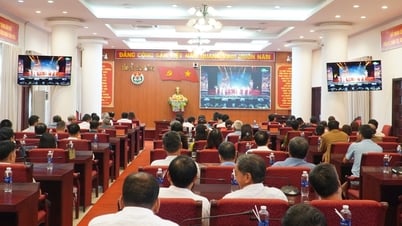

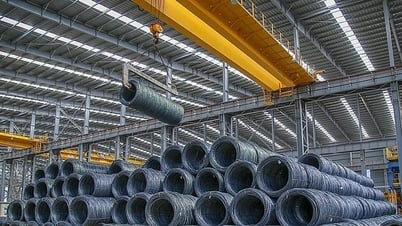









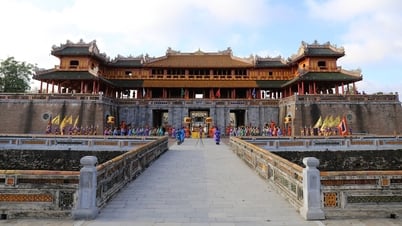



































































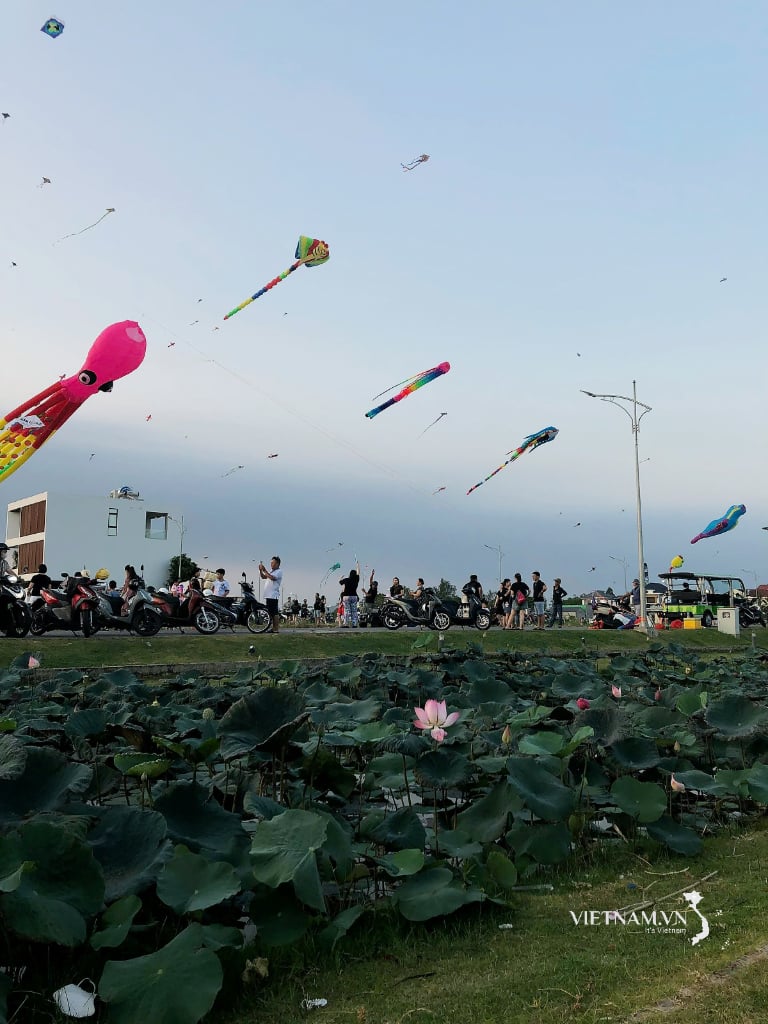



Comment (0)